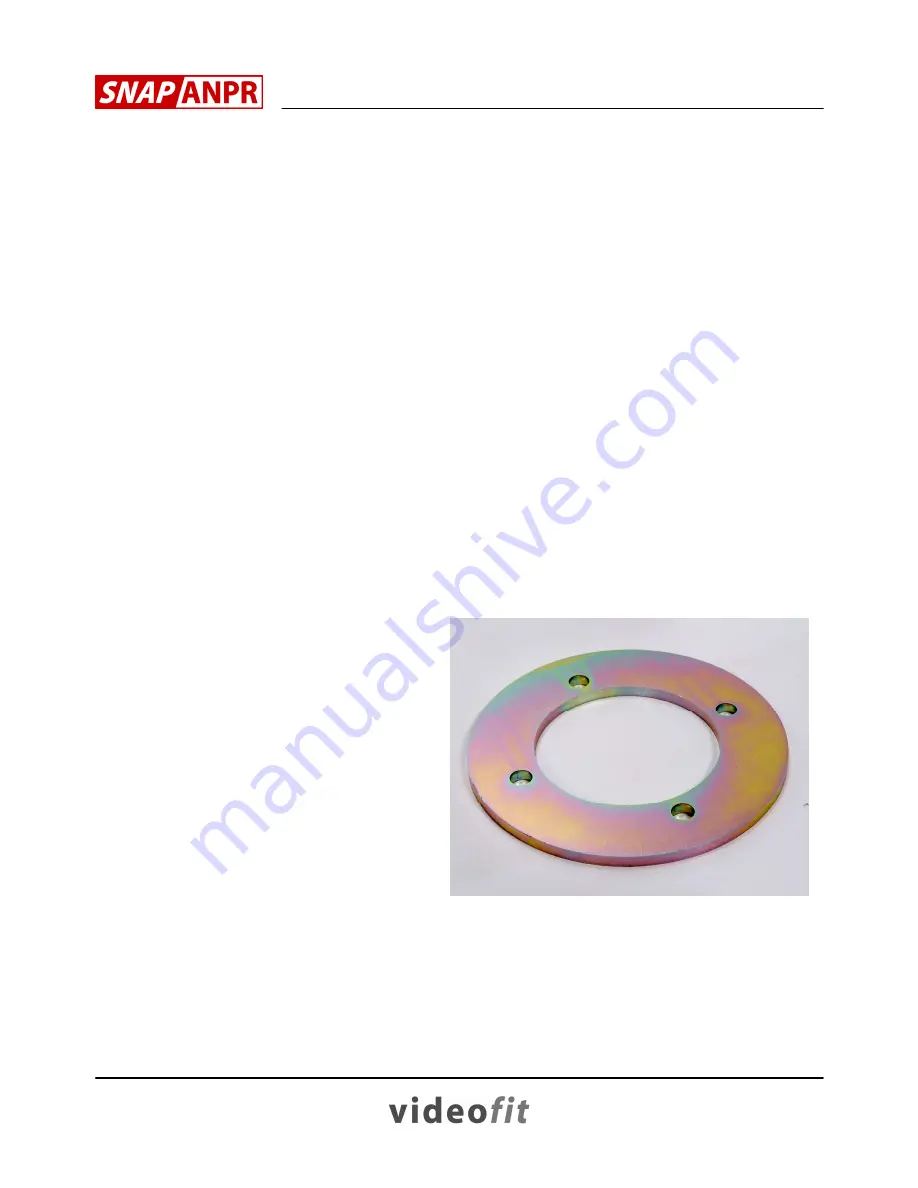
SnapShot ANPR Bollard Camera Installation Guide
Page 5 of 12
3. Fixing the Camera
The bollard camera requires a solid foundation and details of the
suggested concrete base are shown on the next page. The camera may
also be bolted to an existing concrete slab providing it is flat and of
sufficient size.
A clamping ring is provided with the camera in order to secure the cabinet
to the base. The design allows the cabinet to be rotated (panning the
camera) when the fixing bolts are slackened. For this reason, the top
surface of concrete base should be flat and level.
The base clamp ring is normally used as a template when setting rag bolts
into the base or when drilling in studs. When the studs are in situ, the
bollard cabinet is placed over them; finally, the base ring is passed through
the cabinet door, fitted over the studs and bolted down, thereby clamping
the cabinet to the concrete base.
Base Clamp Ring
Cable entry is usually through a
50mm plastic duct set within the
centre of the concrete base. On
completion, this open duct should
be
sealed
to
prevent
any
condensation within the cabinet.
If underground cable ducting is
not practical then, providing the
location permits, steel conduit
may be run at ground level to the
cabinet. Remember that the final
500mm should be run in flexible steel conduit to allow the cabinet to be
rotated. This method of cabling is best suited to locations where the bollard
is adjacent to an existing building or other structure to which the conduit
can be routed. Two conduit entry holes are provided close to the bottom of
the cabinet for this purpose.






























